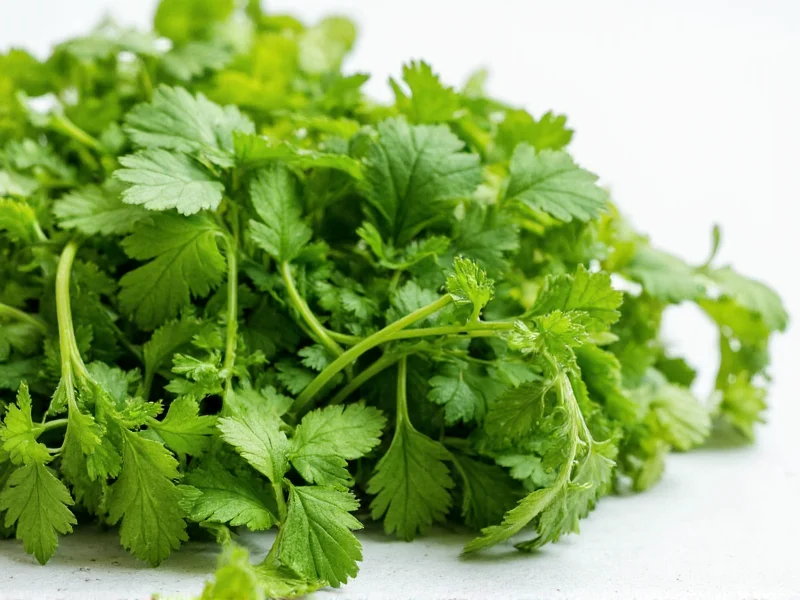When you're in the middle of cooking and realize you've run out of coriander, knowing the right substitute can save your recipe. Whether you're preparing Mexican salsa, Indian curry, or Middle Eastern tabbouleh, the perfect coriander replacement depends on whether you need fresh leaves (cilantro) or ground seeds. This guide provides chef-tested alternatives that maintain your dish's integrity while working with what's available in your pantry.
Understanding Coriander and Its Culinary Role
Coriander refers to both the fresh leaves (commonly called cilantro in the Americas) and the dried seeds of the Coriandrum sativum plant. The fresh leaves offer a bright, citrusy flavor with subtle peppery notes, while the seeds provide warm, nutty, and slightly orange-like flavors when ground. Understanding this distinction is crucial when selecting substitutes, as fresh leaf alternatives differ significantly from seed replacements.
Top Fresh Coriander (Cilantro) Substitutes
When your recipe calls for fresh coriander leaves, consider these alternatives based on flavor profile and culinary application:
| Substitute | Flavor Profile | Best Used In | Substitution Ratio |
|---|---|---|---|
| Parsley (flat-leaf) | Milder, grassier, less citrusy | Salsas, salads, garnishes | 1:1 volume replacement |
| Culantro | Stronger, more pungent coriander flavor | Caribbean and Latin American dishes | ½:1 (use half the amount) |
| Dill | Tangy, slightly sweet, anise notes | Fish dishes, tzatziki, potato salads | ¾:1 (use ¾ the amount) |
| Basil + Mint blend | Herbaceous with sweet and cooling notes | Thai and Vietnamese cuisine | ½ basil + ½ mint to replace 1 part coriander |
Finding the Right Substitute for Your Cuisine
Regional cooking traditions often have built-in alternatives when coriander isn't available. For Mexican cuisine alternatives to cilantro, try a combination of parsley and a squeeze of lime juice to mimic the citrus notes. In Indian cooking without coriander leaves, fresh fenugreek leaves (methi) work surprisingly well in curries and chutneys, though they have a more bitter profile.
When preparing Middle Eastern dishes requiring coriander, consider using fresh mint mixed with a touch of cumin for tabbouleh or fattoush salads. For Thai recipes needing coriander substitute, the aforementioned basil-mint combination delivers similar freshness without overpowering other delicate flavors.
Dried Coriander Seed Alternatives
When your recipe calls for ground coriander seed rather than fresh leaves, different substitutes apply. Dried coriander has warm, citrusy, slightly floral notes that balance many spice blends:
- Cumin: Provides earthiness with a similar warm profile (use ¾ the amount of coriander called for)
- Caraway seeds: Offers comparable citrus notes with more intensity (use half the amount)
- Fennel seeds: Delivers mild sweetness that works in Mediterranean dishes (use equal parts)
- Paprika: Adds color without strong flavor interference in spice blends
- Coriander seed replacement for garam masala: A 50-50 blend of cumin and cardamom mimics the warm complexity
Practical Tips for Successful Substitution
When substituting coriander in your recipes, consider these professional chef recommendations:
- Adjust quantities gradually - Start with less substitute than recommended, then taste and adjust
- Consider the dish's cooking time - Delicate herbs like parsley lose flavor with prolonged cooking, while hardier culantro holds up better
- Balance with acid - A squeeze of lemon or lime can help mimic coriander's bright notes when using milder substitutes
- Texture matters - For garnishes, choose substitutes with similar leaf structure to maintain visual appeal
- Regional authenticity - When possible, use substitutes traditional to the cuisine you're preparing for most authentic results
When Substitutes Won't Work
Some dishes rely so heavily on coriander's unique flavor that substitutes significantly alter the character. Traditional Indian dhania chutney, certain Mexican salsas verdes, and specific Middle Eastern za'atar blends may not achieve the same result without genuine coriander. In these cases, consider making a smaller batch to test substitutions before committing to a full recipe.
Storing and Maximizing Coriander
To avoid future substitution needs, proper storage extends coriander's shelf life. Keep fresh cilantro stems in a glass of water (like flowers) covered with a plastic bag in the refrigerator. For longer storage, chop leaves and freeze in ice cube trays with water or oil. Dried coriander seeds maintain potency for 6-12 months when stored in airtight containers away from light and heat.











 浙公网安备
33010002000092号
浙公网安备
33010002000092号 浙B2-20120091-4
浙B2-20120091-4